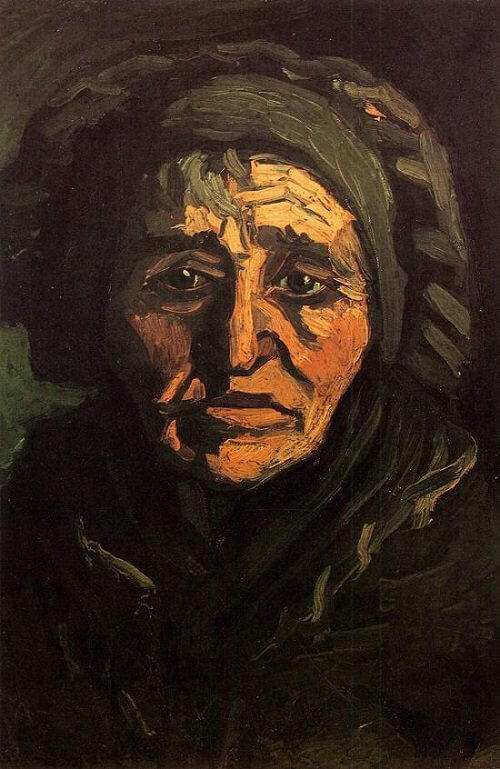Peasant Woman with Dark Bonnet, 1885 by Vincent Van Gogh

The strength of Van Gogh's unique visual language is foremost in this painting of a peasant woman, her face emerging from a dark and gritty background. He has used thickly applied point in strong, confident strokes, building up the three-dimensionality of the face so that it looms out of the canvas. Every brushstroke has a distinct purpose, a characteristic that would become typical of his work.
During this period at Nuenen Van Gogh concentrated on depictions of weavers and peasants. He initially painted scenes of them at work, but later reduced the subjects to a series of studies of heads and hands, throwing them into close focus as seen here. The area itself had a prominent weaving industry, and also a large peasant population who worked in agriculture. It was a place with pockets of extreme poverty and it was these people and scenes that Van Gogh was drawn to. He wrote to Theo:
When I call myself a peasant painter, it is a real fact, and it will become more and more clear to you in the future that I feel at home there."




















